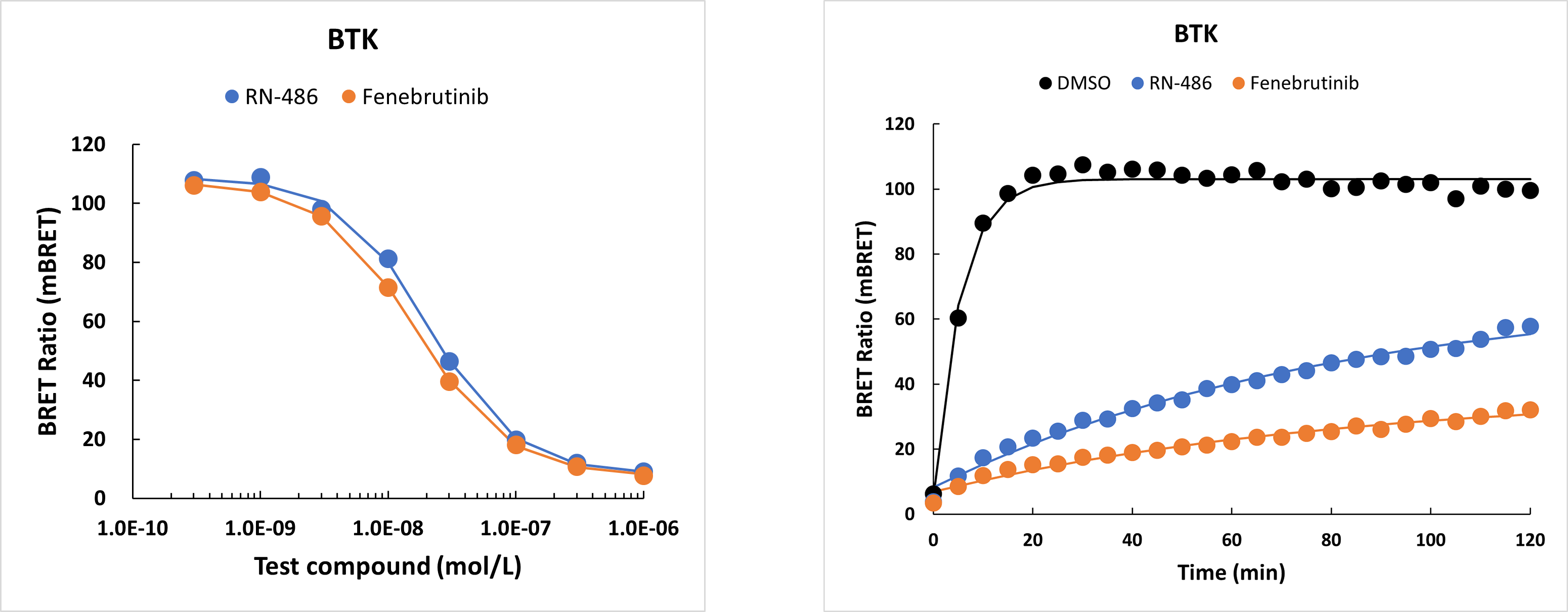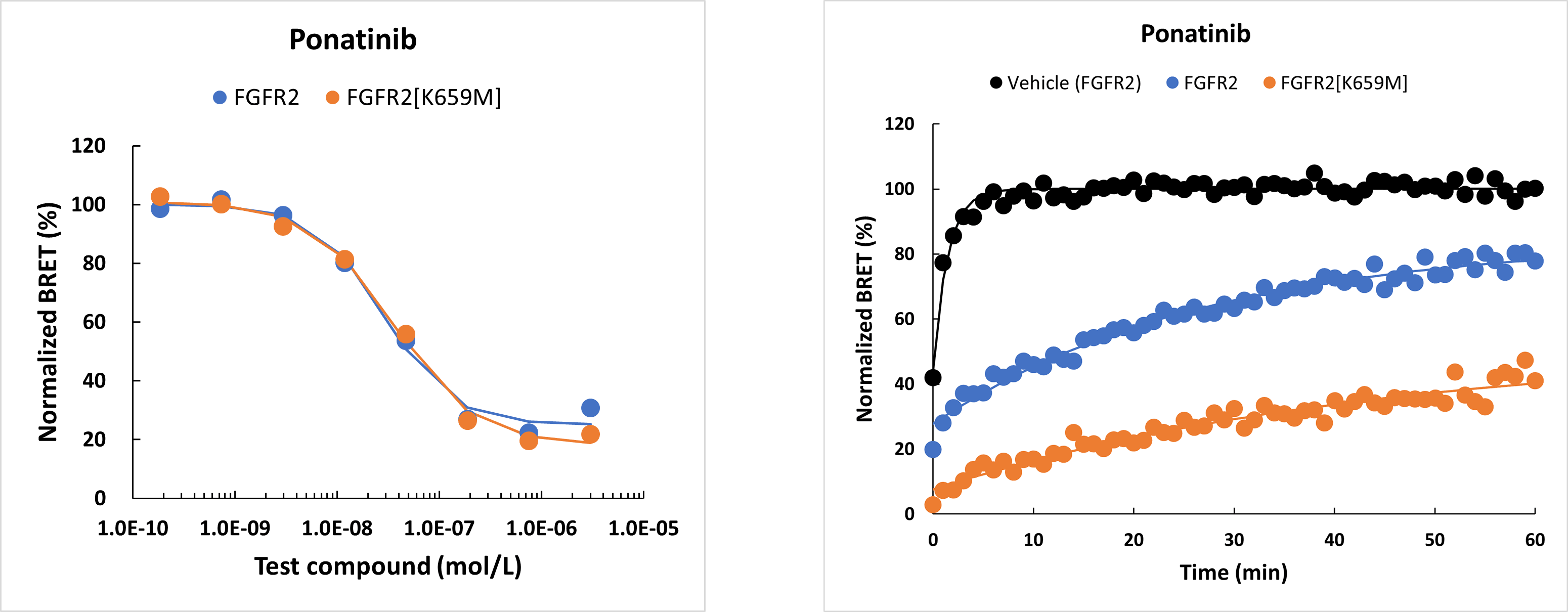- Home
- Cell-Based Assay Services
- NanoBRET™ TE Intracellular Kinase Assay Services
- NanoBRET™ TE Intracellular Residence Time Analysis
NanoBRET™ TE Intracellular Residence Time Analysis
Assessing the kinetic parameters of kinase and compound engagement within intact cells helps to provide differentiation of compounds beyond that of a simple IC50, and to optimize these parameters early in drug discovery. Measuring residence time of your compounds under non equilibrium conditions provides key parameters, in addition to specificity and affinity, which may better predict its therapeutic potential.
Optimizing the selectivity of kinase inhibitors is a major challenge in kinase drug development, which is mostly due to sequence and structural similarity in the ATP-binding sites across the kinome. Although compounds can show similar inhibitory activity (IC50s) or binding affinities (KDs) at equilibrium, these values can consist of very different binding kinetics(association constant: kon/dissociation constant: koff). Given this, designing drugs with desirable selectivity profiles should not only require an appropriate binding selectivity but also the modulation of kinetic selectivity. It is well understood that the longer a compound binds a target, the greater its potential effect - and this is represented by the half life or residence time of the interaction (1/koff). Optimizing a compound to increase its residence time is therefore a key early step in drug discovery programs. NanoBRET™ TE Intracellular Residence Time Analysis provides a mechanism to optimize the residence time of compounds against individual kinase targets, in a living cellular environment.
Data analysis method reference
A New Method to Determine Drug-Target Residence Time of Kinase Inhibitors in Living Cell
(AACR-NCI-EORTC International Conference on Molecular Targets and Cancer Therapeutics, 2019)
(Note)
Prior to Residence Time (RT) Analysis, your compound's IC50 must be determined using our NanoBRET™ assay platform to obtain the ideal concentration for RT optimized assay performance. Our IC50 determinations are performed using half-log dilutions and eight(8) compound concentrations. Depending on the determined IC50 of your compound, we may not be able to perform Residence Time Analysis on it.
Please consult us for details about your residence time analysis request.

RN-486 and Fenebrutinib show similar inhibitory activity while showing different binding kinetics against BTK

Ponatinib shows very similar inhibitory activity against both FGFR2 and FGFR2 mutant while showing different binding kinetics agaist respective kinases
- <Guide for Service Customers>
- Service Flow
- Compound Handling and Shipping
- Application Form for NanoBRET™ Cell-based Assay
